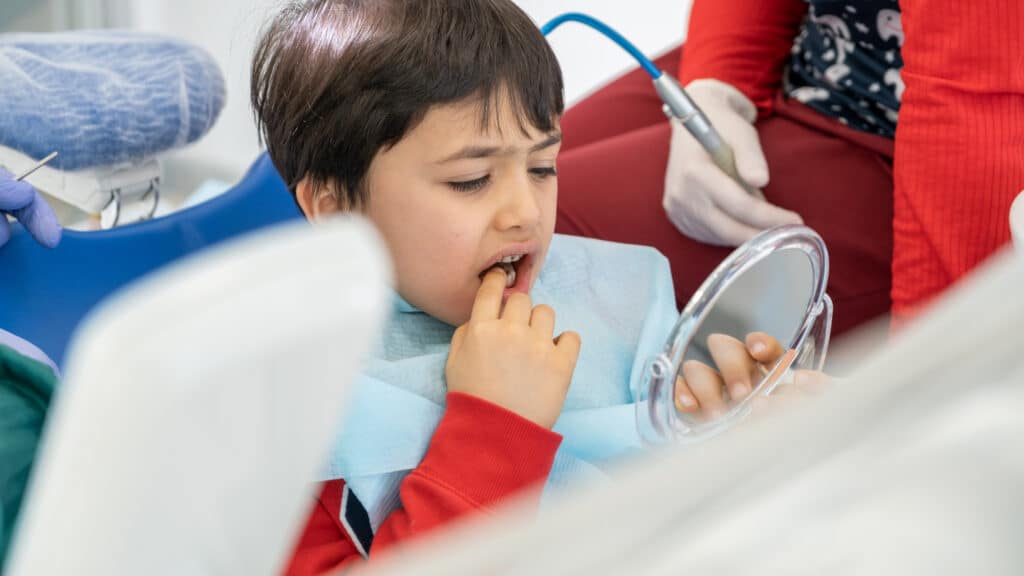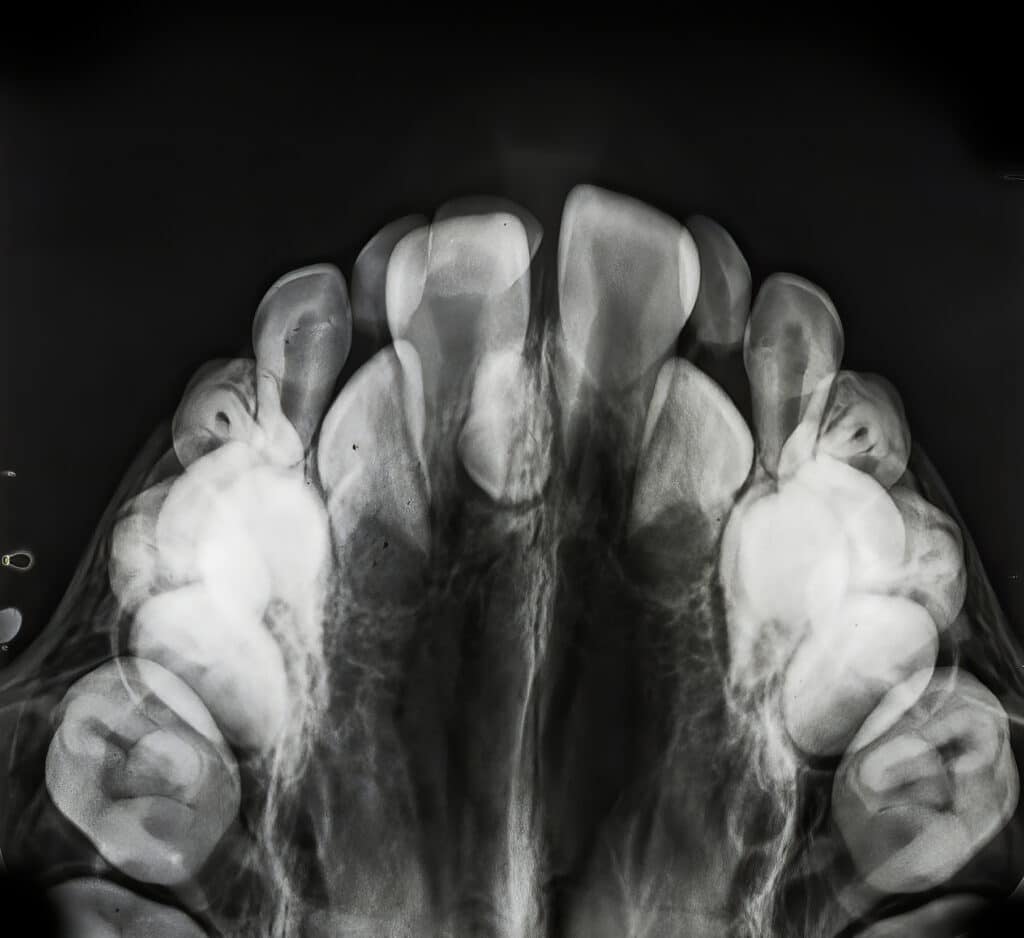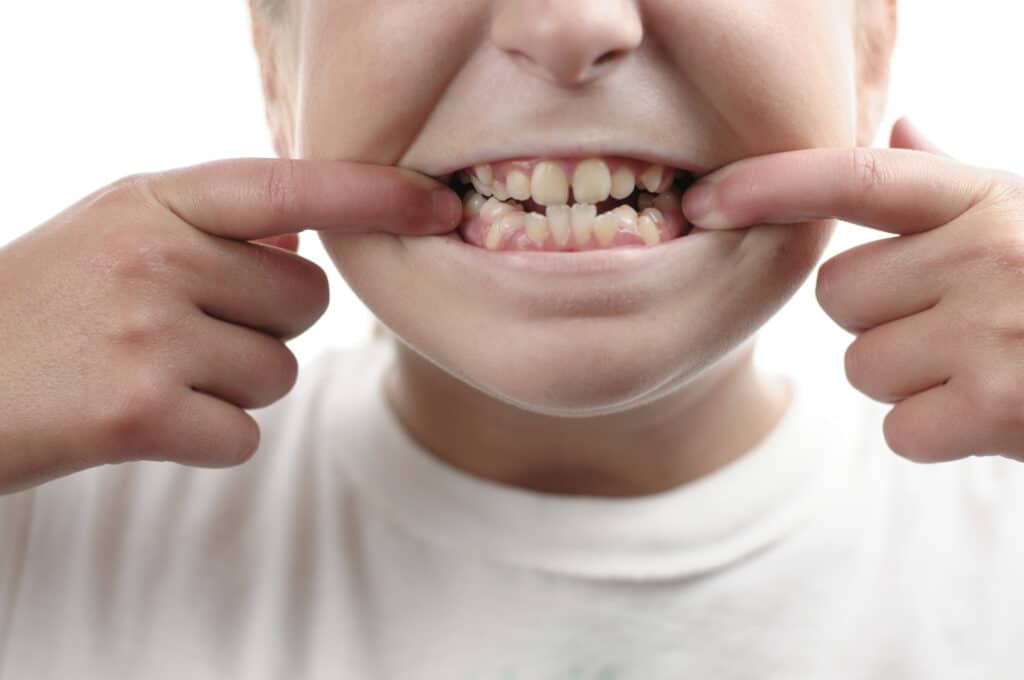As parents watch their child’s teeth come in, some parents notice something unusual—an extra tooth! This is called hyperdontia, a condition where more teeth join the dental party than expected. Let’s delve into
what hyperdontia is, and what to do if your child has an extra tooth.
What is Hyperdontia?
Hyperdontia is a dental condition where more teeth appear than the usual number. Typically, we see 20 primary, or baby teeth, and 32 permanent teeth. However, individuals with hyperdontia develop additional teeth beyond this typical count. These extra teeth are called supernumerary teeth. This condition is relatively rare, affecting an estimated 1% and 4% of people, with about twice as many males than females.
Knowing the types of supernumerary teeth, and the ways hyperdontia may appear, can help you identify this condition, and know what to do if your child has an extra tooth. If you think your child has an extra tooth, don’t panic! In most cases, the extra tooth can simply be removed, or it might not require any intervention at all.
Types of Supernumerary Teeth
Sometimes, one or two supernumerary teeth appear with hyperdontia. These teeth may look similar to the other teeth in the area, and they might not seem unusual, except there are too many. In other cases, the supernumerary teeth are hidden in the gums or other parts of the mouth, and they aren’t visible at all. Or, there may be several supernumerary teeth appearing in different parts of the mouth, or underneath the gums. Sometimes, these teeth do not look the way we expect. There are a few different types of supernumerary teeth, including:
- Supplemental: the tooth’s appearance is normal or expected for that part of the mouth
- Tuberculate: these teeth are oblong or barrel-shaped
- Conical: these teeth are shaped like a cone or peg
- Compound odontoma: this formation resembles multiple small tooth-like forms, instead of one tooth.
- Complex odontoma: this formation is harder to define, and no longer resembles a typical tooth. Instead, it appears to be a mass or dental tissue.
Most Common Extra Teeth: Mesiodens
One of the most prevalent forms of hyperdontia is the presence of an extra tooth called a “mesiodens.” Mesiodens appear between the two upper front teeth and can lead to complications such as misalignment or crowding of the surrounding teeth. Identifying and addressing mesiodens early is crucial to preventing potential dental issues.
Why Does My Child Have an Extra Tooth?
The exact cause of hyperdontia is not always clear, but it is believed to have both genetic and environmental factors. Some potential causes include:
- Genetics: Hyperdontia can run in families, suggesting a genetic predisposition.
- Environmental factors: Certain environmental factors, such as exposure to radiation or specific medications during pregnancy, may contribute to the development of extra teeth in children.
- Related conditions: Some genetic syndromes, like cleidocranial dysplasia, among others, are associated with an increased risk of hyperdontia. Though these conditions are not thought to cause hyperdontia, people with these conditions may be more likely to experience hypodontia.
What To Do If Your Child Has an Extra Tooth
If you suspect that your child has an extra tooth, here’s what you should do.
1. Consult a Dentist
Schedule an appointment with a pediatric dentist early on. A child’s first dentist appointment should be around their first birthday, when they have their first teeth. If others in the child’s family have had hyperdontia, let your dentist know. X-rays help to identify the presence of extra teeth, even if they are not immediately visible, and assess their impact on surrounding structures.
2. Early Intervention
Early intervention is crucial to prevent potential complications. If the extra tooth, such as a mesiodens, is likely to cause misalignment or crowding issues, your dentist may recommend early orthodontic intervention.
3. Treatment Options
The treatment approach for hyperdontia depends on the specific circumstances. In many cases, the extra tooth may need to be extracted to prevent complications and maintain proper alignment of the surrounding teeth. In other cases, orthodontic treatments, like braces, may be recommended to guide the teeth into their proper positions.
4. Regular Monitoring
Regardless of the chosen treatment, regular dental check-ups are essential to monitor the development of your child’s teeth and address any emerging issues promptly.
If you notice that your child has an extra tooth, don’t panic. Early detection and intervention can help prevent negative effects of hyperdontia. By consulting with a dentist and following their recommendations, you can ensure the proper management of extra teeth and maintain your child’s oral health. Hyperdontia is fairly rare, and your child may have a fun story to tell their friends!



